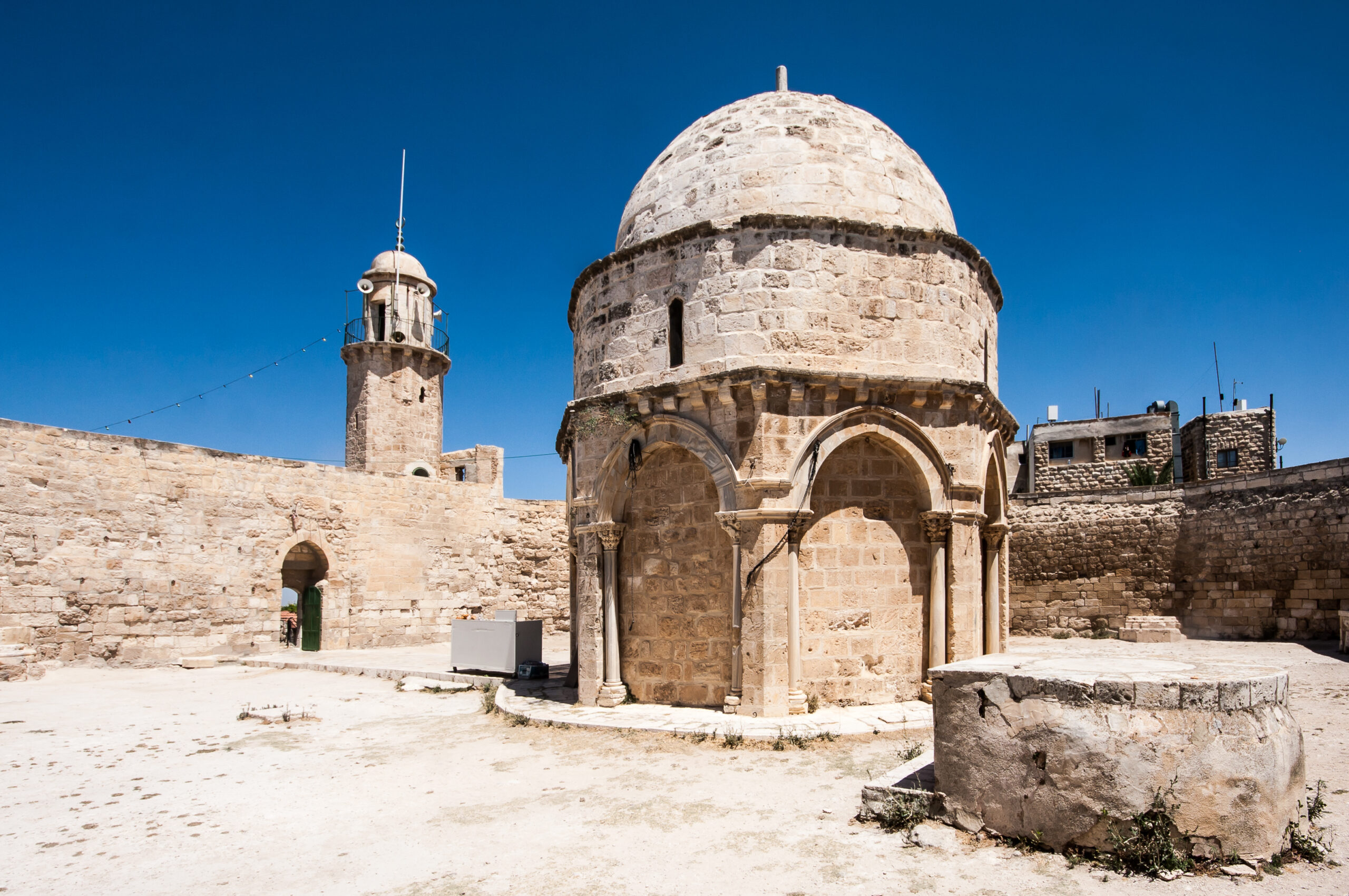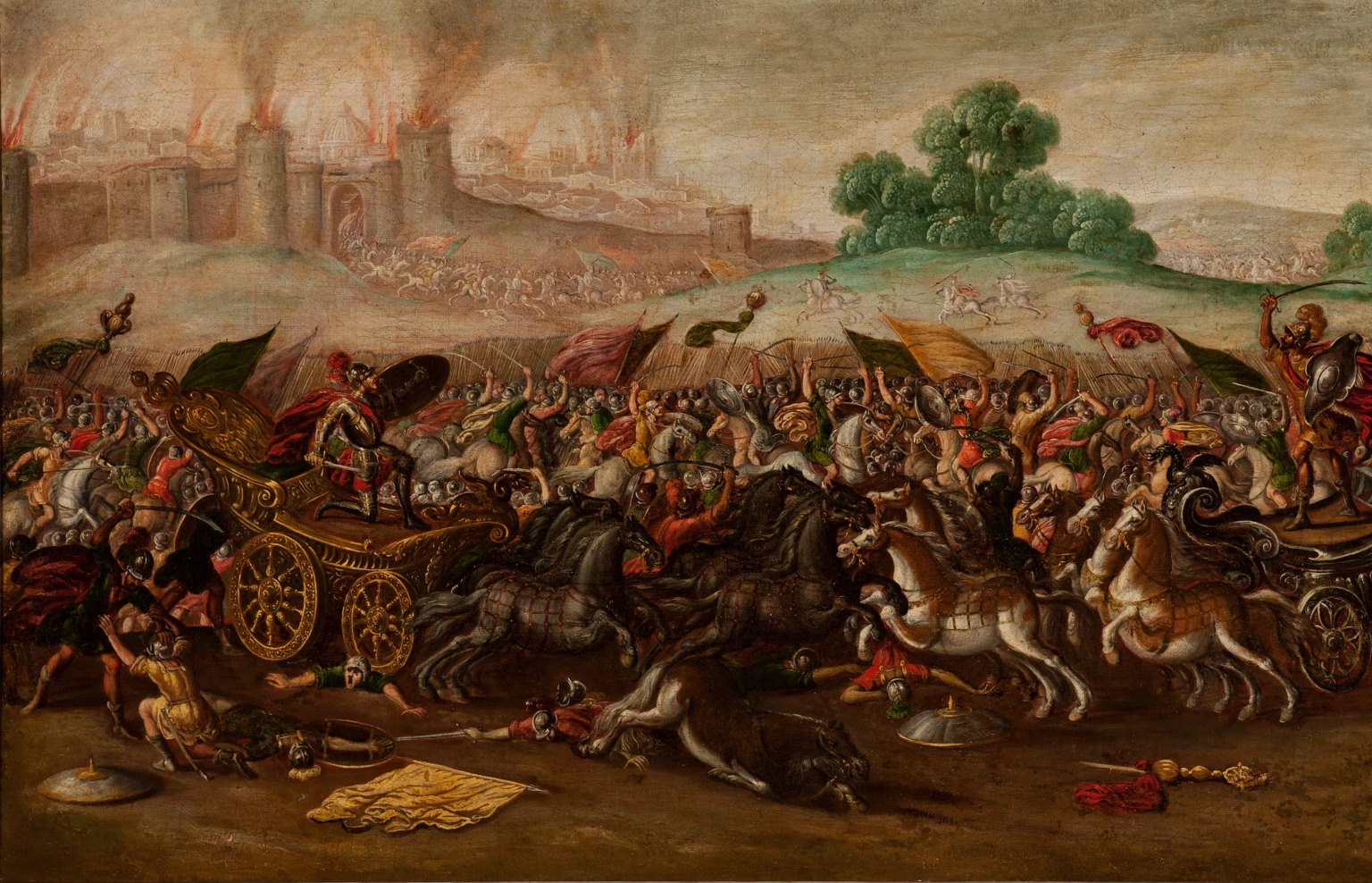The Chapel of the Ascension became a mosque
The Chapel of the Ascension on the Mount of Olives in Jerusalem stands at the site where, according to tradition, Jesus left the earth at his ascension. Saladin converted the chapel into a mosque in the 12th century, but today it is open for Christian worship

The Chapel of the Ascension on the Mount of Olives in Jerusalem. Photo: David Castor
According to the Acts of the Apostles Jesus was taken up to heaven from the Mount of Olives after he had risen from the dead. The angels said to his disciples: “Men of Galilee, why do you stand gazing up into heaven? This same Jesus who was taken up from you into heaven, will so come in like manner as you saw him go into heaven.” Acts 1:11 (NKJV)
It was along the slope down from the Mount of Olives into the city that a few weeks earlier Jesus had been hailed as King when he came mounted on a donkey.
The prophet Zechariah predicts the day of the Lord when the Lord will “stand with his feet on the Mount of Olives, which faces Jerusalem on the east.” Zech 14:4 (NKJV)
In Jewish tradition, the Golden Gate opposite the Mount of Olives is the gate through which the Messiah will enter Jerusalem. The Ottoman sultan Süleyman I barricaded the gate in 1541 to prevent the entry of the Messiah.
Chapel demolished
The Chapel of the Ascension on the Mount of Olives in Jerusalem stands at the site where, according to tradition, Jesus left this earth at his ascension. At the beginning of the 4th century, when Constantine took office as emperor, it became permissible for Christians in the Roman Empire to celebrate religious services openly. The Ascension of Christ then began to be celebrated in a cave on the Mount of Olives (where the Pater Noster church stands today). By the end of the 4th century, the celebration had been moved to the site where the Chapel of the Ascension now stands.
The first chapel on the site was built at the end of the fourth century but was destroyed by the Persians just over 200 years later. It was then rebuilt but destroyed again by the Arabs in the 9th century.
In the 12th century, the Crusaders rebuilt the chapel as an octagonal building with a roof.
When Saladin captured Jerusalem in 1187, the chapel was converted into a mosque and fitted with a dome built of stone. Since the chapel was primarily visited by Christians, the Ottomans built a mosque, Zawiyat al-Adawiyya, with the associated minaret next to the chapel in 1620.
Arab claims
The entire chapel area is still part of the mosque and is run by the Islamic Waqf of Jerusalem but is open for Christian worship. Today’s chapel consists of the Crusaders’ church and the Muslim extensions.
The chapel’s history is an expression of the Arab/Muslim claims to central Christian and Jewish sites in the region. The same claim was formulated 58 years ago right next to the Chapel of the Ascension in the Seven Arches Hotel — formerly, the Intercontinental Hotel. Here nationalist Arab delegates gathered in 1964 to draft the PLO Charter where Muslim and Arab claims were formulated regarding the entire area between the Jordan River and the Mediterranean Sea. Article 1 of the PLO charter reads: “Palestine is an Arab homeland bound by strong Arab national ties to the rest of the Arab countries and which together form the great Arab homeland.”
Sources: Jewish Virtual Library, Wikipedia


